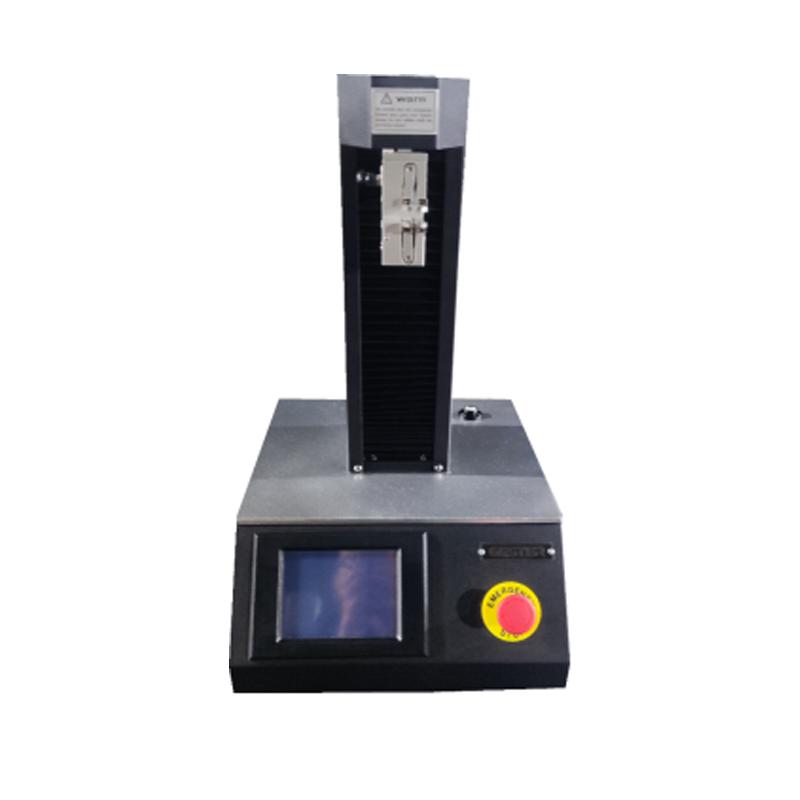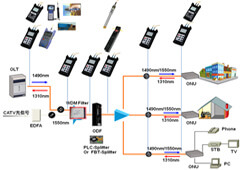Steps to select the right optical measurement system for your quality control lab
Discovering the Impact of Robotic Vision on Modern Production Techniques and Top Quality Control
Robotic vision modern technology is changing the landscape of modern production and quality assurance. By incorporating advanced imaging systems and expert system, makers can accomplish unmatched levels of precision and effectiveness. This change not just enhances production processes but also addresses essential obstacles in maintaining item requirements. As industries progressively depend on these technologies, the ramifications for future production practices stay to be fully checked out. What will this mean for the affordable dynamics of the market?
Understanding Robotic Vision Technology
Robotic vision technology works as the backbone of automation in modern production. It includes making use of cams, sensing units, and expert system to enable robotics to interpret and reply to visual information from their atmosphere. This modern technology permits robots to identify, locate, and evaluate things, making them capable of performing complex jobs such as assembly, inspection, and product handling with accuracy. The combination of machine understanding algorithms better enhances the capacity of robot vision systems, allowing them to adapt to differing problems and boost in time. By processing photos and data in real-time, robotic vision systems can help with faster decision-making and decrease errors in manufacturing procedures (fibre testing equipment). This modern technology not just enhances operational effectiveness but also ensures that high quality requirements are satisfied consistently. As the production landscape continues to progress, recognizing the details of robotic vision modern technology comes to be essential for leveraging its possible fully
Advantages of Robotic Vision in Production
Robotic vision innovation supplies substantial advantages in manufacturing by enhancing accuracy and precision in jobs such as quality control and assembly. This raised degree of information guarantees that items satisfy rigorous requirements, lowering waste and remodel. Furthermore, the combination of robot vision can result in boosted production performance, allowing suppliers to optimize their procedures and accomplish greater outcome rates.
Improved Precision and Accuracy
In modern-day production, improved precision and accuracy are crucial for optimizing production processes and ensuring item quality. Robotic vision systems make it possible for devices to carry out complex jobs with exceptional uniformity. These systems make use of innovative imaging modern technologies to find minute details and variations in materials, elements, and completed products. By assessing aesthetic data in real-time, robot vision considerably decreases human mistake, bring about fewer problems and higher top quality criteria. Furthermore, boosted accuracy in dimensions and placing facilitates better alignment in assembly procedures, which is vital for intricate designs. Eventually, the integration of robot vision not only reinforces the dependability of producing outputs but likewise cultivates self-confidence among consumers regarding item stability and performance. This precision is vital in industries where high quality is critical.
Increased Manufacturing Effectiveness

Manufacturers are increasingly transforming to vision systems to increase production efficiency across various processes. These sophisticated systems allow real-time examination and monitoring, substantially decreasing downtime brought on by errors or flaws. By incorporating robot vision, companies can automate quality assurance, permitting faster identification of issues and reducing the demand for human intervention. This leads to streamlined workflows, as robotics can promptly adjust to changes in production demands without giving up accuracy. Additionally, vision systems facilitate much better stock monitoring by properly tracking elements and items, making certain excellent source usage. Ultimately, the fostering of robotic vision not just improves performance yet additionally contributes to higher outcome rates, reduced operational prices, and enhanced general performance in the manufacturing market.
Enhancing Top Quality Control Processes
Robotic vision technology greatly boosts quality assurance procedures in production by employing precision inspection techniques. These sophisticated systems assist in real-time problem discovery, making sure that products fulfill rigid high quality criteria. Therefore, producers can lessen waste and boost general effectiveness.
Precision Inspection Techniques
Accuracy examination methods have actually reinvented quality assurance procedures in production, making it possible for the detection of min flaws that conventional approaches might overlook. These strategies leverage progressed imaging modern technologies, such as high-resolution cams and laser scanning, to achieve unrivaled precision. By utilizing robot vision systems, producers can automate inspection jobs, guaranteeing consistent performance and decreasing human mistake. The integration of artificial intelligence algorithms furthermore improves these systems, permitting them to adjust and boost with time. Additionally, precision evaluation promotes the identification of refined variants in product measurements and surface area coatings, which can considerably impact general item quality. As a result, producers can carry out restorative activities more promptly, ultimately bring about reduced waste and boosted client fulfillment.
Real-Time Problem Discovery
Taking advantage of innovative imaging modern technologies, real-time defect detection changes quality assurance processes in production. By integrating high-resolution cams go to website and advanced algorithms, manufacturers can swiftly determine abnormalities during manufacturing. This technology facilitates prompt rehabilitative activities, decreasing waste and boosting total efficiency. Real-time systems evaluate items as they move along the production line, making sure that issues are identified and attended to without postponing production routines. In enhancement, the application of artificial intelligence boosts the precision of these systems, permitting them to adjust to brand-new defect patterns gradually. Manufacturers profit from improved product quality and decreased functional prices. Eventually, real-time flaw discovery not just simplifies procedures however additionally promotes a culture of continual renovation in modern production environments.
Real-Time Information Evaluation and Decision Making
In the vibrant landscape of manufacturing, real-time information evaluation empowers systems to make swift, informed choices. By leveraging advanced robotic vision innovations, manufacturers can collect and refine large amounts of data instantly. These systems examine visual inputs to monitor manufacturing procedures, ensuring that any type of variances from high quality criteria are detected and resolved promptly. Subsequently, manufacturers can maximize operations by reallocating sources and changing operations based upon real-time understandings.
The integration of data analytics allows for predictive maintenance, where possible devices failures are prepared for prior to they disrupt manufacturing. This proactive approach decreases downtime and improves total effectiveness. fibre testing equipment. The capacity to make data-driven decisions in genuine time substantially decreases waste and enhances product top quality, permitting makers to reply to market demands quickly. As a result, real-time data analysis not just simplifies production however additionally fosters a society of continuous renovation in contemporary production settings
Challenges in Applying Robotic Vision Systems
Applying robotic next vision systems in producing provides a series of obstacles that can hinder their performance. One substantial obstacle is the intricacy of integrating these systems with existing equipment and process. Manufacturers typically deal with compatibility issues with tradition tools, bring about boosted expenses and downtime. Additionally, the variability in item shapes, sizes, and products can make complex the calibration of vision systems, demanding extensive training and fine-tuning.
An additional obstacle lies in refining huge quantities of visual data in actual time. High-performance computer resources are essential, which might require additional financial investment in framework. There is a lack of experienced personnel capable of taking care of and preserving these sophisticated systems, leading to prospective operational ineffectiveness. Ensuring the reliability and accuracy of robot vision systems under varying ecological problems postures a constant obstacle. Dealing with these concerns is essential for optimizing the possible advantages of robotic vision in production.
Future Trends in Robotic Vision for Manufacturing
As developments in man-made knowledge and artificial intelligence remain to progress, the future of robotic vision in production shows up increasingly appealing. Arising trends indicate a shift in the direction of a lot more advanced imaging innovations, such as 3D vision systems and hyperspectral imaging, which will certainly enhance precision in quality control processes. Assimilation with the Web of Points (IoT) will certainly allow real-time data analysis, allowing robot systems to adapt swiftly to modifications in the manufacturing atmosphere. The development of joint robots (cobots) outfitted with sophisticated vision capacities is anticipated to promote seamless human-robot communications, improving robotic vision performance and security on the manufacturing facility flooring. Additionally, the incorporation of edge computing will certainly encourage robot vision systems to process data in your area, minimizing latency and making it possible for faster decision-making. These technologies will not just streamline manufacturing processes yet also considerably enhance product quality, positioning robot vision as a foundation of future industrial operations.
Frequently Asked Questions
Just How Much Does Robotic Vision Innovation Commonly Expense?
Robotic vision innovation normally costs in between $10,000 and $100,000, depending on the complexity and specifications. Variables affecting cost include sensing unit quality, software program capabilities, and combination demands, making it necessary to analyze particular job needs.
What Industries Are Many Influenced by Robotic Vision Innovations?
Robotic vision advancements significantly impact industries such as manufacturing, automobile, electronic devices, and food handling - fibre testing equipment. These markets take advantage of improved automation, enhanced quality assurance, and raised effectiveness, causing structured procedures and reduced labor prices
Can Robotic Vision Systems Be Integrated With Existing Machinery?
Robotic vision systems can undoubtedly be incorporated with existing machinery. This integration enhances operational efficiency, permitting producers to utilize progressed technologies without the need for complete overhauls, consequently maximizing manufacturing procedures and maintaining top quality standards.

What Skills Are Needed to Operate Robotic Vision Equipments?
Running robotic vision systems necessitates efficiency in programs, an understanding of maker discovering, knowledge of photo processing methods, and the capacity to fix equipment and software concerns, making certain seamless integration and suitable efficiency within making atmospheres.
Are There Any Kind Of Security Interest In Robotic Vision in Production?
